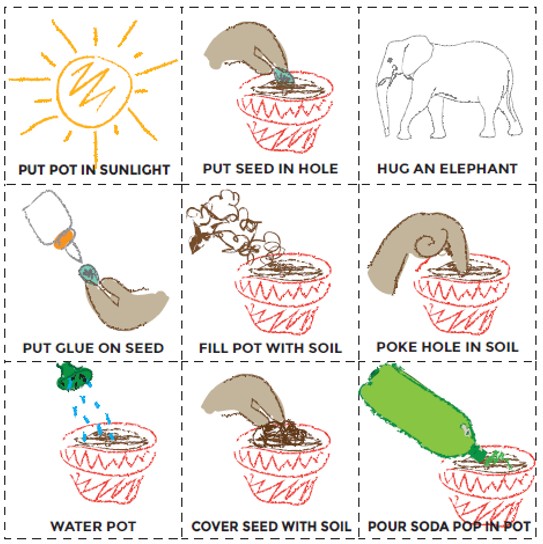Real-life Algorithms
Overview
- Students will decompose large activities into a series of smaller events.
- They will arrange events sequentially into the correct order.
Rationale (Why we are doing this?)
- Students will relate the concept of algorithms to everyday activities.
- They will begin making connections between real life situations and online situations.
Materials/Resources
- Water rocket launcher (available through a number of sources – see pictures)
- Pop bottle ( 1 or 2 litre)
- Water source (hose or bucket of water)
- Masking tape (electrician’s tape is helpful)
- Recycled cardboard, Bristol board
Context and Background Knowledge
Students will understand that an algorithm is a list of steps that you can follow to finish a task.
Curricular Connections (Competencies and Content)
| Developing readiness and beginning to explore computational thinking. |
Explore + Understand + Create (Key elements/Lesson Design/Format)
- I do- Teacher will model how to outline step by step instructions for a given task. Choose something simple like how to draw a house or how to brush your teeth. Have you instructions already written on a piece of chart paper. Explain that you need to be very explicit and detailed in your instructions.
- We do- As a class, create a list of instructions for a task the students are somewhat familiar with such as planting a seed. Write the instructions as given on the board and then follow them exactly to plant a seed. Did we miss a step? Go back and fix as needed.
- You do- Arrange (see image 1), draw pictures, or write instructions in a sequential order. Choose a task such as planting a seed that you reviewed as a class. Then switch with a partner and try to complete the task using their instructions.
- Come back together as a class and discuss the lesson: were you able to follow your partner’s instructions, what if the algorithm was missing a step, what if there were even more steps?
Applications/Adaptations/Extensions
- Students will choose a simple task they know how to do and create step by step instructions to share with the class. They will then teach their classmates this new skill.
Assessment
- Do students understand what an algorithm is?
- Are they able to break down or chunk an activity into smaller components?
Image 1:

Images and ideas sourced from: https://code.org/curriculum/course1/6/Teacher.
